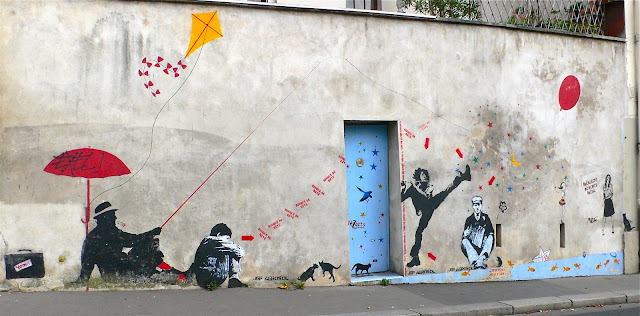How to sort out "art" from "vandalism" in the streets? Parisian street artists have reconciled themselves to a system of notifying officials and receiving authorization--to guard against legal proceedings and to avoid removal of their works.
Since 2001 the artists' association Lézarts de la Bièvre opens up 70 studios to the public each June and invites a street artist to paint on selected walls along the studio circuit in the fifth and 13th arrondissements.
Miss.Tic inaugurated the tradition and was followed the year after by Jérôme Mesnager, father of the Corps Blanc. Nemo, creator of a whimsical black stenciled shadow man in coat and hat, came next, then the two artists known as Mosko et Associés added their signature African savannah creatures.
In 2005 came Speedy Graphito, another first-generation street artist. His early works of angular lines and robot figures are reminiscent of the late Keith Haring's rollicking geometric shapes.
Each artist's work is added to the preceding one, forming visual dialogues, as in the mural below from 2006, featuring three figures of one of the most popular stencil artists, Jef Aérosol.
Because of their ephemeral nature, some of these works are still visible, others not, so that their photos today are archival.
For more information, history and super visuals including videos and maps of five different walking circuits, see http://www.lezarts-bievre.com/
This post is the fourth in a series of excerpts, with minor revisions, taken from Inside Outsider Art, an article I wrote which appeared in France Today magazine.
Text & photos ©2010 P.B.Lecron




















































